David Cross – 17 April, 2012
It always helps in a review to get in that nicely weighted acerbic crack about what is wrong with the show, who should not be there and how the exhibition could so easily have been transformed by a startlingly obvious choice. Without this, there is the real risk of sparking in the reader a soporific inertia that can come with both too much positivity and the likelihood of never actually seeing the exhibition.
Melbourne
Angelica Mesiti, Charlie Sofo, Ross Manning, Katie Lee, Bennet Miller, Kate Mitchell
New 12
Curated by Jeff Khan
17 March - 20 May 2012
What is it about performance at the moment? Wedged in between Made Active: The Chartwell Show which has just opened at Auckland Art Gallery and Nothing Like Performance at Artspace, Sydney late last year, we have New 12 at ACCA in Melbourne, a show that in particular ways interrogates what could loosely be called ‘the performative mode’ as a key driver of contemporary art practice. Interestingly, as in the other two exhibitions, performance is framed here less as a genre (Performance with a large P) than as a fluid and discursive set of mechanisms imbricated through object and time-based media. As curator Jeff Khan outlines in his catalogue essay, the six Australian artists are united by a feeling of liveness that runs through their work, traces of movement combined with the potential for action. While the art speaks more to the potential for liveness and the dynamic interplay between audience member and assorted objects and environments, this exhibition drills into the rich seam of possibility taking place at the confluence of performance and assorted material and moving image forms.
New is ACCA’s annual show of contemporary Australian art developed each time by an external curator. First established in 2003, New has been, it must be said, an uneven event in its ten-year history with many good individual works over that time but very few cohesive or considered curatorial statements. Too often it has felt like curators have attempted to break the next big thing at the expense of thinking through prospective alignments and relations across a suite of connected practitioners. Because of this they tend to have a palimpsest effect, each one writing over the next, with the result that you have to work painfully hard to remember which iteration was which. Granted, good work has a habit of standing out in any company, but there something to be said for inhabiting an exhibition and not having to completely re-calibrate the art radar as you turn each corner.
Against the grain, Khan has sought to make an exhibition of myriad parts that at the same time has a strong - but not didactic - armature. It is a very astute move. For perhaps the first time (at least in the past few iterations) New speaks to particular shared ideas expressed across a suitably expansive set of visual trajectories.
In a really resolved and consistent show it is a testament to Angelica Mesiti’s work Citizens’ Band that it more than holds its ground. Featuring a four screen projection that surrounds the viewer, Mesiti has filmed four expatriates from around the world performing a musical activity from their home country. A taxi driver whistling in a highly idiosyncratic style, an African woman drumming with her hands in the water of a Parisian public swimming pool, and a Mongolian playing the morin khur (horsehead fiddle) while throat singing on a corner in Newtown, Sydney, these activities might seem to be straightforward and literal documentary videos. But the immense beauty of the performers’ musical talent played out in seemingly incongruous and harsh surroundings, tips the work into a paen about cultural transplantation and the nourishment that only distinctive and locally vernacular musical forms can bring.
Mesiti connects the markedly different performances through her understanding that in each case the music functions as solace and as protective barrier, deftly evoked in the footage of Algerian Mohammed Lamourie playing his Casio keyboard propped on a shoulder while singing a truly stunning lament. That he is standing in the middle of a Parisian metro carriage with people getting on and off, brushing past him, actually accentuates both his capacity to find his own space in the crowded city, and the potential for his music to be enhanced, to really radiate, in sonically and spatially harsh surroundings.
Kate Mitchell is a Sydney artist obsessed to varying degrees in acts of labour. Her video projection Get Into It depicts footage of her scaling a computer generated façade of a 19th century institutional building using only toilet plungers. The physically arduous act of raising herself up to escape out an elevated window rubs against the strangeness of the projected façade, ultimately giving the work an artificiality or sense of contrivance that seems to add to the amusement and absurdity of the escape. Like Alicia Frankovich, Mitchell is interested in positioning the body in peculiar relationships to architecture, and employing feats of physical dexterity to play with conventional understandings of how we inhabit and construct the meaning of buildings. When she finally gets to the top and her bum wiggles its way through the open window before disappearing, it is laugh inducing in a Buster Keaton escapade kind of way.
Like Mitchell, Katie Lee is interested in how we use objects to inhabit and delineate architectural spaces, but the title of her work It’s Not Me, It’s You points to a different focus. The work is less about Lee’s navigation of functionless and enigmatic ladders, reflective barriers and table armatures, and more about the audience. We are coaxed into being actors in a cool, hermetic, yet at the same time beautifully lyrical miser en scene of elegantly impractical objects. As performers we also get to view, on a series of monitors throughout the gallery, another performer, a dancer, activating a series of gestures and movements throughout the empty gallery pre-exhibition. Jan Bryant in her catalogue essay presciently outlines how these two distinct modes (performer and viewer) allow our concentration to shift between different images and forms - as well as different registers of time. There is a lot of phenomenological manipulation taking place here in an off-centre postminimal kind of way, but it certainly nudges a heightened level of self-reflexivity in relation to our encounter and navigation of the material forms, surfaces and durational experiences of contemporary interior architecture.
The interest in enigmatic and peculiar architectural forms is also evident in the work of Bennett Miller who often employs real animals in installations as a mechanism of both hilarity and political critique. Miller is perhaps best known for his 2010 project where he constructed a replica of a UN office in Geneva and employed 47 yapping, yet strangely articulate, sausage dogs to take on the roles of national delegates. His work for New 12 Behavioural Ecology continued the animal theme, in this case the architecture of zoo enclosures - only without yapping critters of any type. Miller’s cages, modelled on the stylishly modern Berlin zoo primate enclosures, have that distinctly spooky quality that comes with an empty yet carefully assembled animal microclimate. They challenge us to spot the creature hiding or sleeping somewhere in their confined and always public ‘home’ and leave a slightly sinister taste of death when we realise there is nothing living or breathing to gawk at. The tasteful design and colour scheme of the enclosures are more suggestive of upwardly mobile apartments than an animal’s native habitat, which is of course the point. Why look at a dowdy and ersatz-authentic monkey cage when you could bleed the divide between a trip to the zoo and a meander through your local Ikea.
It always helps in a review to get in that nicely weighted acerbic crack about what is wrong with the show, who should not be there and how the exhibition could so easily have been transformed by a startlingly obvious choice. Without this, there is the real risk of sparking in the reader a soporific inertia that can come with both too much positivity and the likelihood of never actually seeing the exhibition. Having set up the conditions for a final denouement, I unfortunately have precious little ammunition to fire. Still, Charlie Sofo’s assortment of carefully framed detritus sculptures. while elegantly fragile and beautifully formed, felt a bit too mannered and in certain components clunky in the juxtaposition of found material and its display mechanism. Likewise, Ross Manning’s crowd pleaser fluorescent sculptures Spectra, two structures suspended from the roof of the gallery and set in motion by attached domestic fans, would no doubt have infuriated Dan Flavin (which is almost enough reason to like them), but they failed to really push beyond a kind of easy spectacle.
Yet ultimately these are small fry quibbles, and as much a measure of the company they keep than glaring weaknesses in the works themselves. This New felt like it captured that triumvirate of performance/sculpture/video, oscillating wildly through a breadth of contemporary practices and giving it a fresh and compelling twist. There is a lightness of touch manifest in very carefully crafted relationships that at the same time speak to much bigger social issues. Ultimately New prefaced the continued fascination artists have with how objects, assorted spaces and moving image might be configured to ingeniously coax the audience member to be a dynamic, energised and ultimately willing feature of the art experience.
David Cross
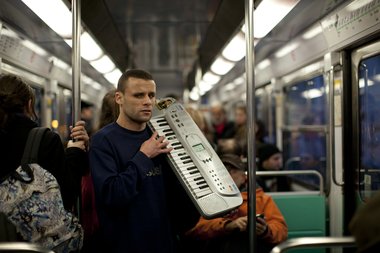
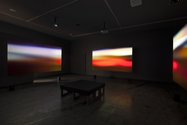


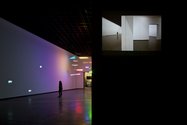
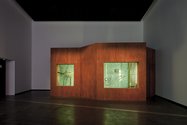
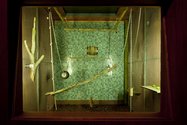
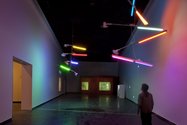
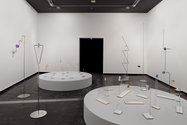
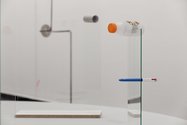
 Two Rooms presents a program of residencies and projects
Two Rooms presents a program of residencies and projects Advertising in this column
Advertising in this column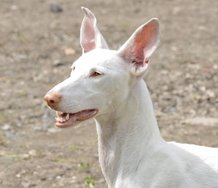
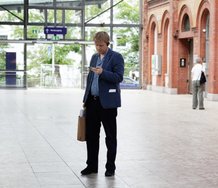

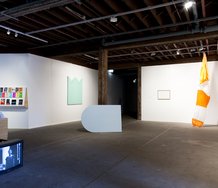
This Discussion has 0 comments.
Comment
Participate
Register to Participate.
Sign in
Sign in to an existing account.